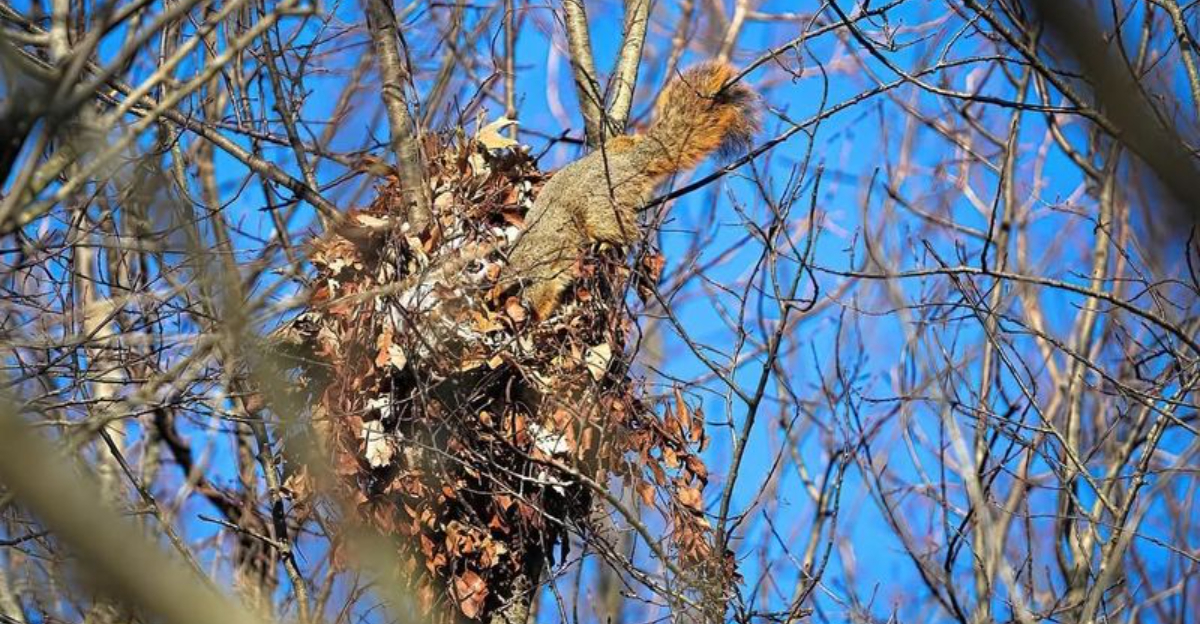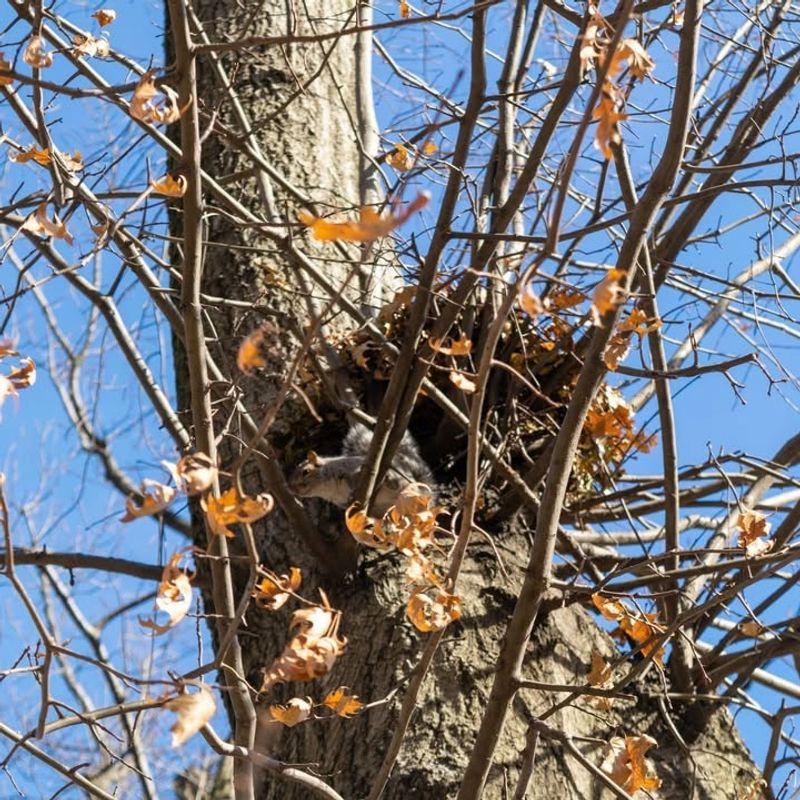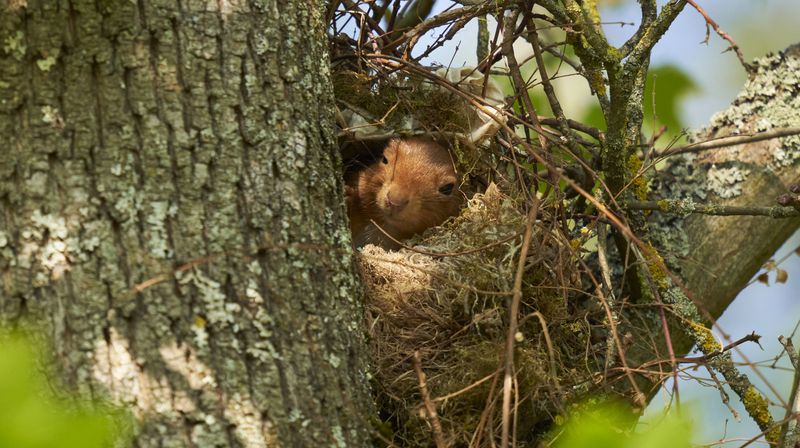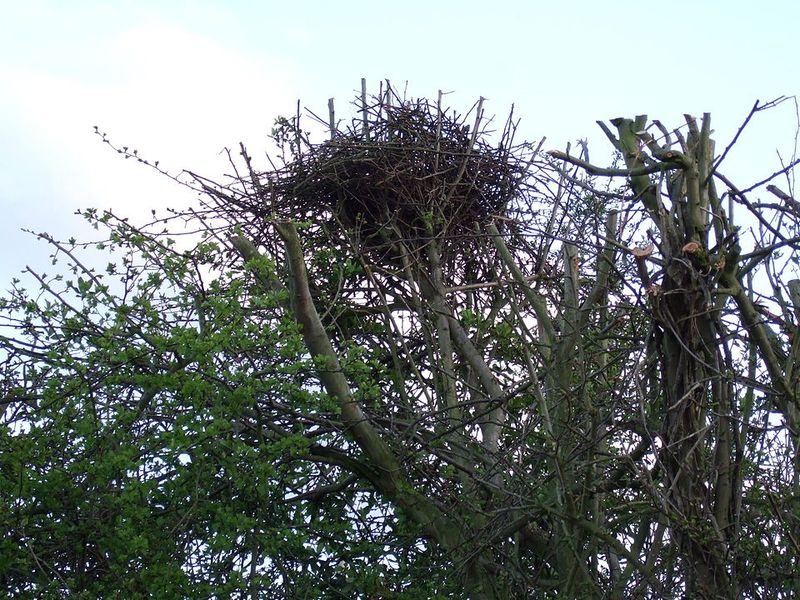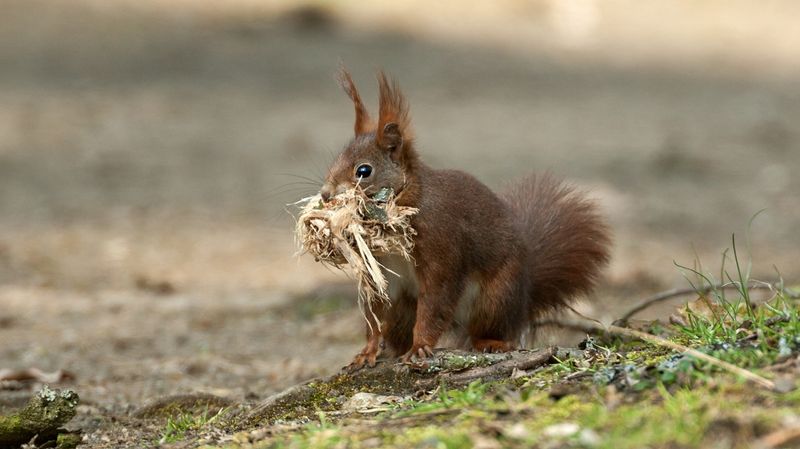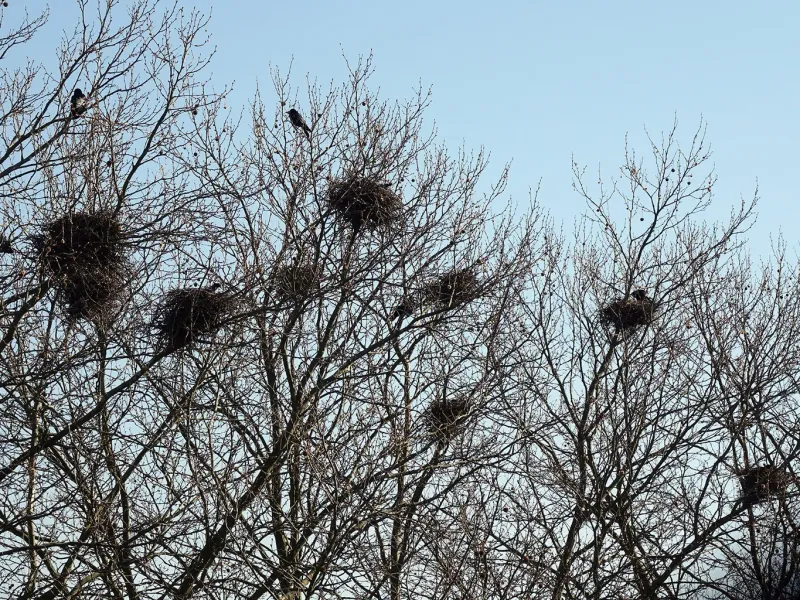Something that looks like an ordinary bird nest in a South Carolina tree can stop you in your tracks once you take a closer look. I’ve spotted those tangled clusters myself and learned that not every nest belongs to a feathered friend.
Some of these shapes hide surprises that have nothing to do with birds at all. They’re usually the work of a squirrel. For many homeowners, discovering the true builder turns a simple glance into a real eye-opener.
Squirrel Nests Are Called Dreys
Squirrels don’t actually build nests in the traditional sense. Their homes have a special name: dreys. These structures sit high in tree branches and look like messy balls of leaves and sticks from the ground.
Most South Carolina people mistake them for abandoned bird nests because of their similar appearance. Dreys serve as cozy shelters where squirrels sleep, raise babies, and escape bad weather throughout the year.
Built With Leaves, Twigs, And Moss
When constructing their homes, squirrels gather natural materials from their surroundings. Leaves form the outer shell, while twigs create a sturdy framework that holds everything together securely.
Moss and soft bark strips line the interior, making it comfortable and warm. Sometimes squirrels even add feathers or shredded paper they find nearby. The entire structure can measure about two feet wide, which is surprisingly spacious for such small animals.
Multiple Entrance And Exit Holes
Unlike bird nests that typically have one opening, squirrel dreys feature two or more entrances. This clever design serves an important survival purpose for these cautious creatures.
Having multiple exits allows squirrels to escape quickly if a predator like a hawk or snake approaches. One hole might face the tree trunk while another points outward. Birds rarely build nests with this feature, making it a key difference between the two types of structures.
Larger And Messier Than Bird Nests
Size matters when identifying whether you’re looking at a squirrel or bird home. Dreys appear much bulkier and less organized than most bird nests, often resembling a pile of leaves someone threw into a tree.
Bird nests tend to be compact, tidy, and carefully woven with precise patterns. Squirrel constructions look rougher around the edges. If the nest seems big enough to hold a basketball, it probably belongs to a squirrel rather than a bird.
Built High In Tree Forks
Squirrels prefer building their dreys where strong branches meet or fork, usually twenty to sixty feet above the ground. This strategic placement provides stability and protection from ground-dwelling predators.
The fork of a tree acts like a natural cradle, supporting the weight of the nest and the squirrels inside. Bird nests might appear at various heights, but squirrel dreys consistently occupy these higher, more secure positions. Safety comes first for these tree-dwelling acrobats.
Used Year-Round, Not Just For Breeding
Many birds abandon their nests after raising their young, but squirrels live in their dreys throughout all four seasons. During winter, these structures become essential survival shelters against freezing temperatures and harsh winds.
A single squirrel might maintain two or three dreys in different trees, rotating between them like vacation homes. If you spot a leafy nest during South Carolina winter that still looks occupied, chances are excellent that it belongs to a squirrel staying warm inside.
Often Mistaken For Crow Or Hawk Nests
From the ground, telling the difference between a squirrel drey and a large bird nest can be tricky. Crows and hawks build substantial nests that share similar size and placement with squirrel homes.
The key difference lies in the materials and construction style. Bird nests use more sticks and have defined bowl shapes, while dreys appear as rounded, leafy clumps. Watching for activity helps too, squirrels visit their nests throughout the day, while birds come and go less frequently.

